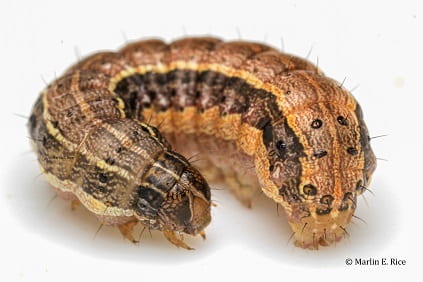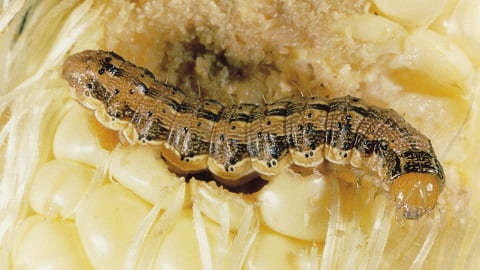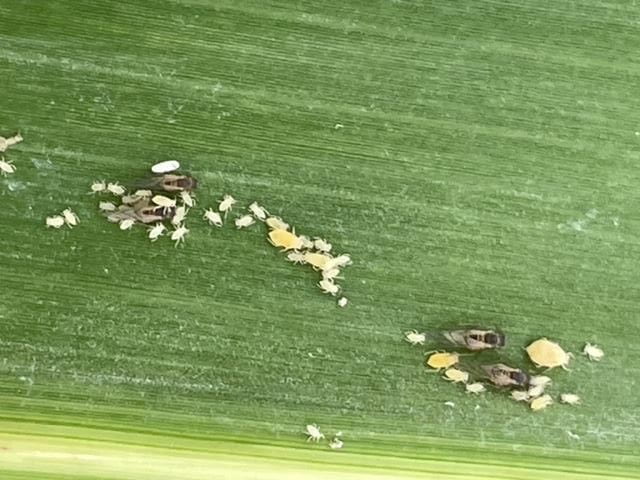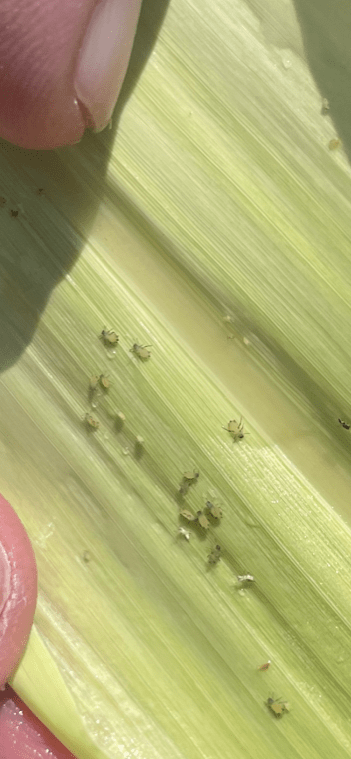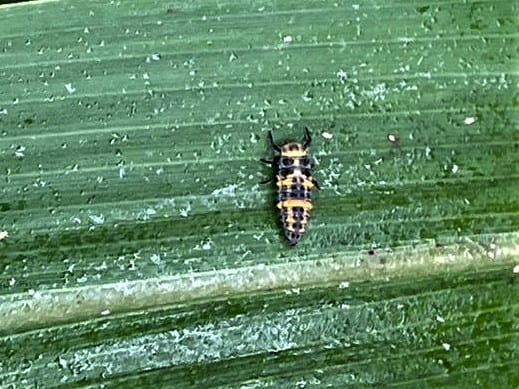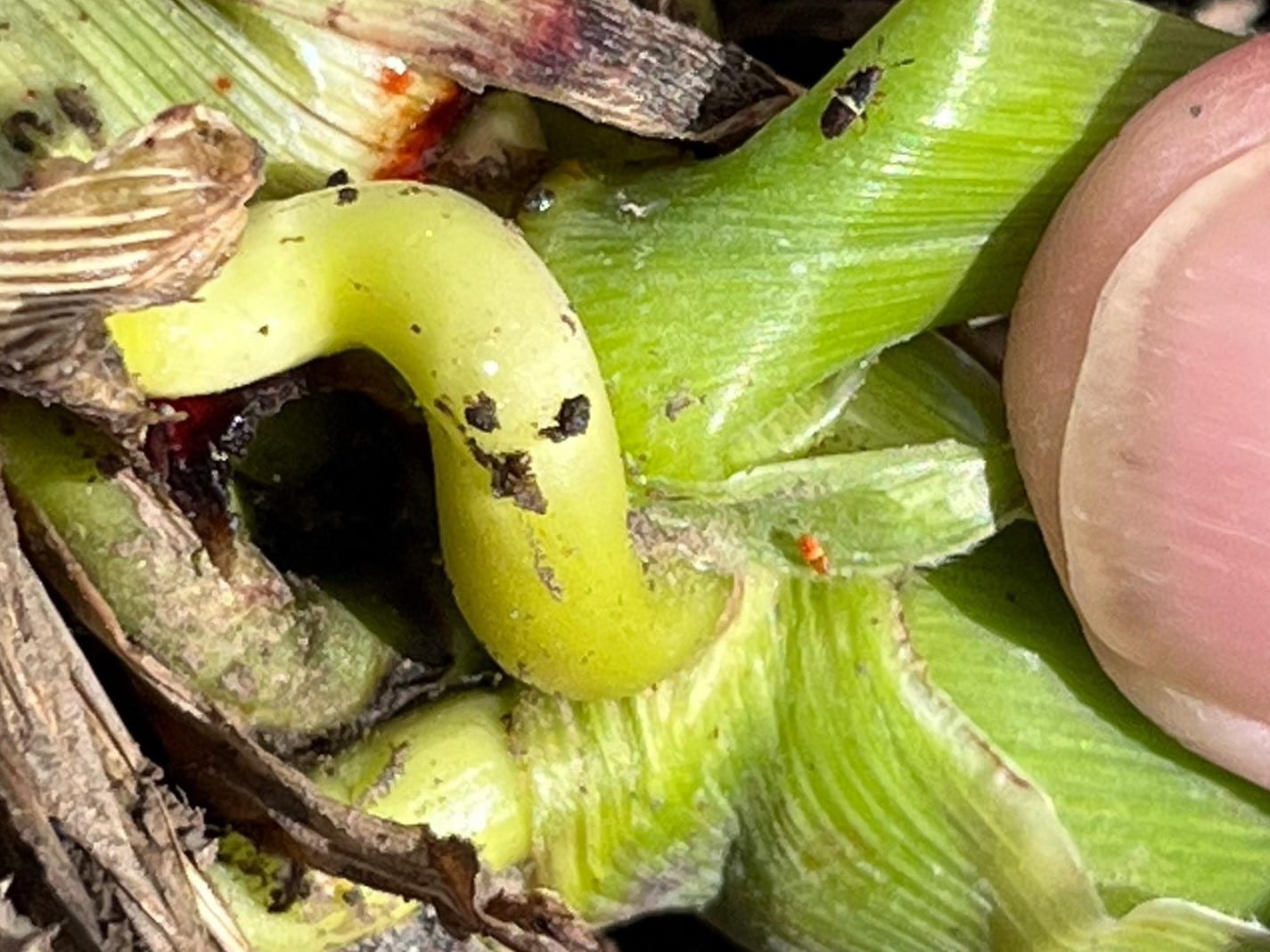–by J.P. Michaud, Professor of Entomology, Agricultural Research Center, Hays, KS
Relatively new, cost effective, and environmentally friendly products are available for controlling headworms in sorghum. These are pest-specific viruses, formulated as biological pesticides that can be sprayed on the same as any foliar insecticide, or delivered via overhead irrigation sprinklers. But application must be made early in the infestation, while the majority of larvae are still small. These products should not be used as rescue treatments, but an early application will ensure infections propagate naturally throughout the field and that reapplication will not be required. Sold under the brand names Heligen® (for corn earworm) or Fawligen® (for fall armyworm), these products are highly specific, killing only the target pest, sparing beneficial insects, and using other insects as vectors to create a local ‘epizootic’ of disease in the field. Thus, there is no environmental impact of treating below threshold (conventionally one or more worms per head), and it is valid to use these products as a relatively low-cost insurance policy, especially in a year when earlier sorghum to the south is already experiencing fall armyworm damage.
Farmers should be aware that many of the generic pesticides that might appear attractive on the basis of low cost are now much less effective against these pests, due to their repeated exposure to the same modes of action on many different crops over the years. In contrast, there are no known cases of pests evolving resistance to a virus, and unlike fungal pathogens, virus infections do not require humidity or leaf wetness. However, the product must be consumed by the pest, and larvae take up to a week to die, depending on temperature, but will stop feeding 48-72 hours post-injection. These virus formulations are also compatible with tank mixes of other materials, provided pH is held below 8.0, and combinations of both products are available if both species of headworms are present. More information is available from the supplier:
https://www.agbitech.us/
